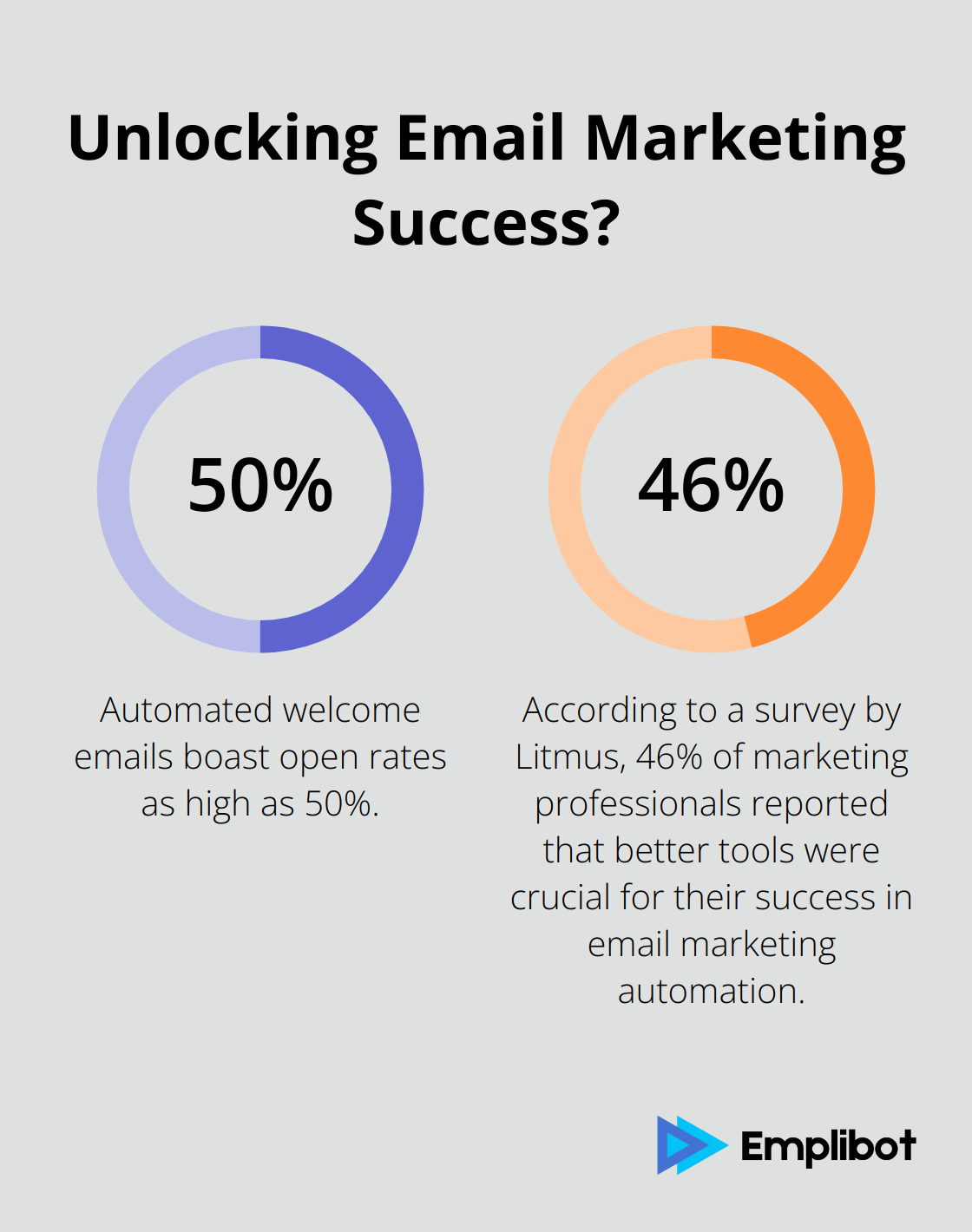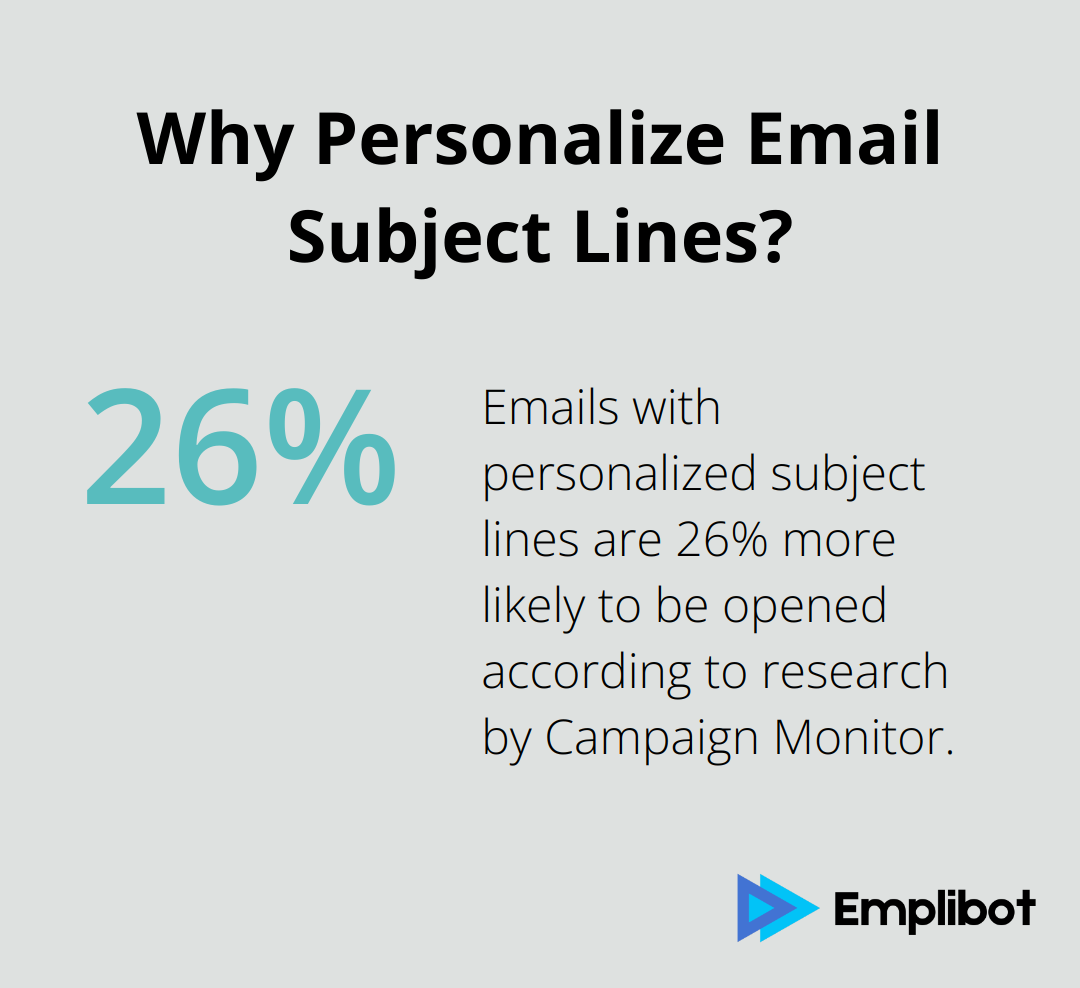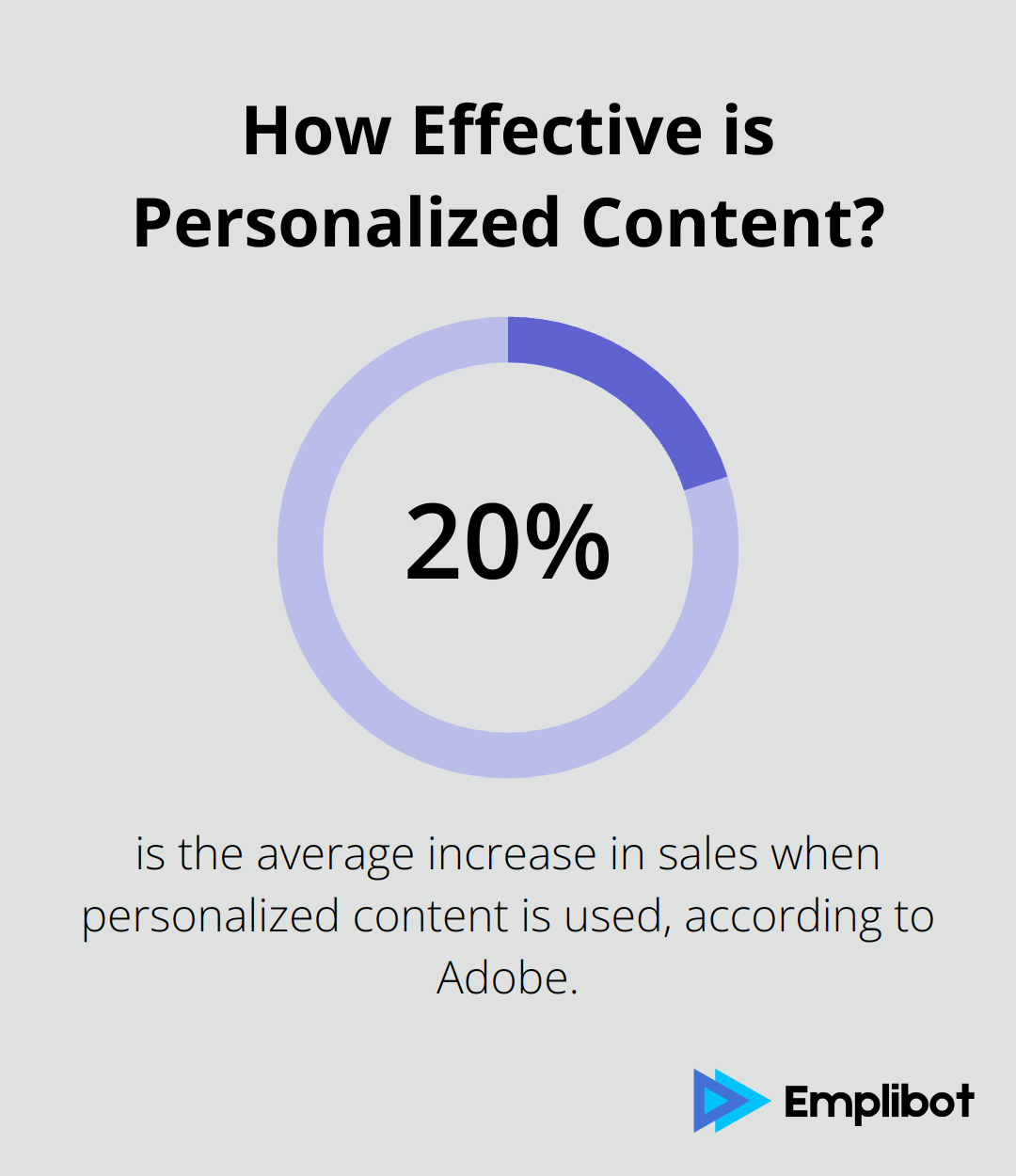Email automation is a powerful tool for enhancing marketing efforts, offering personalized engagement with minimal manual intervention. From selecting the right platform to crafting compelling content, setting up your first email automation can seem overwhelming.
We at Emplibot are here to simplify the process, providing you with a clear, step-by-step guide to get started.
Discover key strategies and practical tips to make your email campaigns more effective and efficient.
Contents
ToggleWhat Is Email Automation?
Email automation streamlines marketing tasks by sending personalized email messages based on predefined triggers or actions. Think of it as setting up a series of emails that automatically go out when a user interacts with your business in a specific way—like signing up for a newsletter or abandoning a shopping cart.
Why Email Automation Matters
It’s no secret that email marketing remains one of the most effective channels, with an average ROI of 42:1. Automating these processes not only saves time but also ensures consistent and targeted communication. For instance, automated welcome emails boast open rates as high as 50%, significantly higher than standard newsletters.

Automated workflows are particularly valuable. They allow businesses to nurture leads from initial interest to eventual purchase without constant manual input. This can increase conversion rates by 14.5%, according to research by Invesp. Moreover, personalized automation can enhance engagement, as tailored content is often viewed more positively by recipients.
Tools for Email Automation
To get started with email automation, you’ll need the right tools. Here are some well-regarded options:
-
Mailchimp: Widely known for its user-friendly interface, Mailchimp offers various automation features. You can set up complex workflows and segment audiences with ease.
-
HubSpot: This CRM tool integrates email automation seamlessly with sales pipelines, allowing for a holistic approach to customer relationship management.
-
ActiveCampaign: Known for its robust automation capabilities, ActiveCampaign helps businesses create personalized customer journeys with its visual automation builder.
Selecting the right tool is paramount. According to a survey by Litmus, 46% of marketing professionals reported that better tools were crucial for their success in email marketing automation.
To maximize efficiency, consider tools that integrate well with your existing systems. For instance, HubSpot’s integration with CRM systems can improve collaboration between marketing and sales teams, enhancing overall strategy.
Email automation isn’t just a nice-to-have; it’s an essential part of any modern marketing strategy. By leveraging these tools and focusing on personalized, automated workflows, businesses can achieve higher engagement rates and better ROI.
How to Set Up Your First Email Automation
Choosing the Right Platform
Selecting the right email automation platform is critical. It’s not just about ease of use, but also about features that align with your goals. Mailchimp, HubSpot, and ActiveCampaign are standout options. Mailchimp’s user-friendly interface makes it perfect for beginners, while HubSpot offers seamless CRM integration, ideal for those looking to align their sales and marketing efforts. ActiveCampaign’s visual automation builder is great for creating complex workflows.

A study by Litmus shows that 46% of marketing professionals see better tools as pivotal to their success in email marketing automation. Investing in the right platform pays dividends, especially in terms of ease and effectiveness.
Crafting Effective Workflows
Designing effective email workflows can significantly boost engagement and conversion rates. Start by mapping out the customer journey. Identify key interactions where automated emails can add value. For instance, a simple welcome series might include a thank-you email immediately after signup, followed by a product introduction, and later a follow-up email. Research by Experian found that welcome emails generate an average open rate of 57.8%.
Ensure your workflows are both relevant and timely. Drip campaigns, for instance, can nurture prospects by delivering valuable content over time. Onboarding new customers through a series of well-timed emails can increase retention. Customer.io’s study revealed that companies implementing automated customer onboarding see a retention rate that is 50% higher than those who don’t.
Writing Engaging Emails
Compelling content is key to effective email automation. Personalization goes beyond just addressing recipients by their first names. Use dynamic content to tailor emails based on user behavior and preferences. According to research by Campaign Monitor, emails with personalized subject lines are 26% more likely to be opened.
Focus on clear, concise, and engaging copy. Subject lines should be attention-grabbing but not misleading. With mobile devices displaying only the first 30 characters, keep them short and impactful. Interactive elements like GIFs and videos can also drive engagement, as Litmus reports that emails with videos see a 300% increase in click rates.
Regularly analyze your email metrics to refine your content strategy. Tools like A/B testing can help determine what resonates best with your audience. Testing different elements within your emails, from subject lines to call-to-action buttons, can provide invaluable insights.
By leveraging these strategies and tools, setting up your first email automation can lead to more targeted campaigns, higher engagement rates, and better overall results.
How to Measure Success
Effectively measuring the success of your email automation campaigns is essential to improve and optimize future efforts. Relying purely on gut feeling or anecdotal evidence is not sufficient.
Key Metrics to Track
The first step in evaluating your campaigns is identifying the right metrics. Traditional metrics like open rates, click-through rates, and conversion rates are crucial. Open rates provide insight into how many recipients are engaging with your emails, while click-through rates show how many are interacting with the content. Conversion rates track the percentage of recipients taking the desired action, whether it’s making a purchase or signing up for a newsletter.

Additionally, tracking metrics like bounce rates, unsubscribe rates, and spam complaints can highlight issues with email list quality and content relevance. A high bounce rate, for example, suggests outdated or incorrect email addresses, while high unsubscribe rates might indicate content or frequency issues.
Analyzing Results to Improve Future Campaigns
Analyzing these metrics can provide actionable insights for refining your strategy. For instance, if you notice that open rates are consistently low, re-evaluate your subject lines and preview text. According to Campaign Monitor, subject lines significantly impact open rates, with personalized subject lines increasing open rates by 26%.
If your click-through rates are lagging, examine the email content. Are your call-to-actions clear and compelling? A/B testing different elements, such as images, CTAs, and layout, can reveal what resonates best with your audience. Campaign Monitor’s findings show that emails with videos see a 300% increase in click rates, so incorporating multimedia might be a viable strategy.
Case Studies of Successful Email Automation
Looking at real-world examples can be incredibly helpful. For instance, one of the standout successes comes from The Athletic’s newsletter, which uses user behavior and location data to customize content. This personalized approach has not only enhanced engagement but also driven revenue. On average, personalized content can lead to a 20% increase in sales (Adobe).
Heather Cox Richardson’s newsletter is another significant example, generating around $5M in revenue annually. The key here is consistent, valuable content that keeps subscribers engaged and eager to return.
By focusing on these strategies and continuously refining them based on measurable outcomes, your email automation campaigns will not only become more efficient but also more effective in achieving your marketing goals. For more in-depth tips on optimizing your campaigns, explore our guide to better decision-making.
This approach ensures each email serves a purposeful role in driving engagement, conversions, and ultimately, business growth.
Conclusion
Email automation has proven to be a game-changer for marketing efforts, streamlining tasks while ensuring personalized engagement. Integrating effective workflows, prioritizing the right platforms, and continually analyzing key metrics can dramatically enhance your email marketing campaigns. The tools like Mailchimp, HubSpot, and ActiveCampaign allow businesses to set up complex yet manageable automation processes, improving both engagement and conversion rates.

The benefits of implementing email automation are clear. Businesses gain the efficiency of automated tasks, freeing up time for more strategic activities. Research shows that automated emails achieve higher open rates and conversions, making them a powerful tool for customer retention and lead nurturing. Personalized content, automated drip campaigns, and well-timed interactions can significantly bolster customer loyalty and drive revenue growth.
Now is the perfect time to explore the possibilities of email automation. As more companies adopt these strategies, the competitive edge becomes even more vital. For more insights on how automation can transform your marketing efforts, explore our resources on better decision-making and engagement.
For businesses looking to enhance their content strategy further, Emplibot offers SEO-friendly articles published directly to your WordPress site, including keyword research, images, and internal linking. Learn how you can automatically build and optimize your blog with Emplibot at emplibot.com. Embrace email automation and watch your marketing campaigns flourish.










 Rated Excellent 4.5
Rated Excellent 4.5